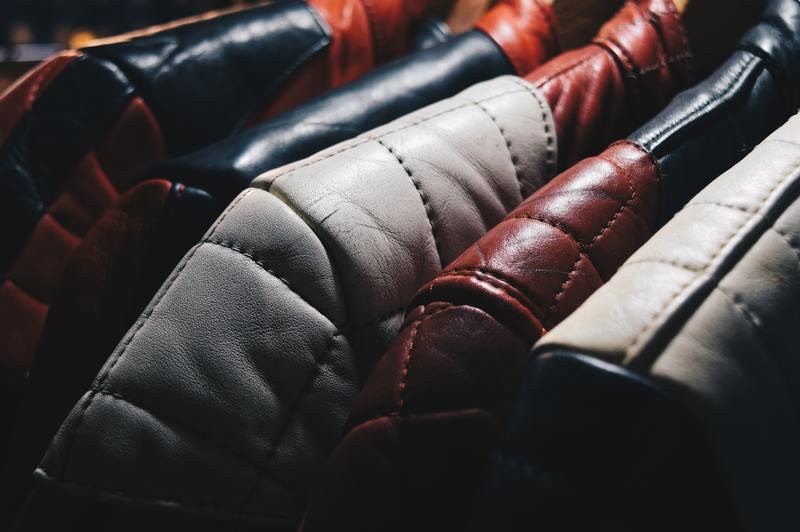It’s incredibly refreshing to clean and organize our home once in a while, so here, we’ll look at the three steps on how to clean mold off leather, which you then apply not only to your furniture but even to your bags and the like. You might be wondering why your leather even gets mold in the first place, so let’s look into that as well.
Leather can be made from either animal hide or plant substances. The traditional and widely used raw material for making this product is domesticated cattles’ skin, which is processed well to remove unnecessary contents and increase their life and durability. Lately, vegan leather has been making a name for itself, which most were made of mango fruit.

No matter what leather-made collective you have, you’ll definitely want to keep it in the best state: shiny, scratchless, and free from foreign entities. Here, we’ll focus on dealing with something quite disturbing on leather: molds!
Steps On Cleaning Mold From Leather
Mold growth isn’t pleasing to the eyes and causes damage to the material, and may also cause health issues; that is why knowing the causes of mold growth on your leather material. If it ever happens to grow on your favorite leather couch or your precious leather jacket, here’s all you need to know and do to clean that mold effectively.
Step #1. Preparation
First and foremost, in everything you do comes preparation, not only your materials but also yourself and the equipment you will be working on. For your materials, it would involve cleaning tools and your safety equipment. It should include your gloves and mask, especially if you are allergic to some of the cleaning chemicals and may as well as the mold itself.
The equipment that you’ll be working on, in this case, would be leather material. When doing your cleaning process, it may be best to do it outside. Doing this would prevent the spores from spreading on some other things.
Step #2. Brush and soap
The next thing you crucially need to do is brush away the mold infestation in your leather thing. Use a soft-bristled brush or a dry cloth and remove the infestation. Make sure to wash the cloth or brush with detergent and hot water to prevent the spores from transferring.
After wiping the mold colony, wash the surface using a solution of mild detergent and warm water. Doing this would prevent the mold from growing again. If you have a leather saddle soap, then it would be much better.
Using a clean cloth or a sponge, wipe the soap down the entire surface of the leather. Wipe down any remaining soapy residue using a clean cloth soaked in plain water. After wiping the soap and air, dry your leather surface and avoid drying under the sun, for it may cause brittleness on the leather surface and can ultimately result in cracking of the leather surface.
Step #3. Finish up
Now that you have removed and dried the leather material, it’s time to finish up. Make a solution of equal parts of water and rubbing alcohol and wipe it down the leather surface to prevent a resurface of a mold infestation using a sponge or a cotton swab.
After the removal and prevention measures, you must not forget to recondition the leather. Leather is a product that naturally contains oil, and like most natural products, it requires proper maintenance. Failure in applying the appropriate conditioning may cause the leather to crack.
Using your trusty cotton swab, apply a leather conditioner to the leather surface to keep the oil in its optimal state and avoid damaging the leather surface. With that, you have now finished cleaning your precious leather material.
What causes mold on leather?
Mold growth and mildew are mostly due to water moisture in the surface of the material. A damp surface is where mold thrives.
Natural products such as leather material serve as the mold infestation’s food supply. It allows them to grow and multiply using the starch present in the material.
Mold also requires a relatively high humidity accompanied by stagnant air and a bit of darkness. So if you ever see mold on your leather jacket, then maybe you can narrow down the roots of your problem and resolve it.
What can you use to kill mold?
Bleach and alcohol are one of the recognized solutions to kill mold and prevent its growth. However, there are some alternatives to do this effectively.
Bleach is effective for non-porous materials such as tiles. Here is an article on “what does water damaged tiles look like” for you to identify if your tiles have mold infestations.
If you’re cleaning mold on porous materials like wood, bleach may not be the perfect solution to that. Although it will remove mold infestations, it may damage the wood or make its color fade. Here is a guide on fixing and maintaining water damaged woodwork to help you with this matter.
Conclusion
Now that you know how to clean mold off leather, maybe it’s time to clean your leather materials on your own. Leather materials can last for a long time if properly maintained and monitored. As long as you know the solution to every problem, such as mold growth, it can ultimately extend the lifetime of your leather things and materials.
Learning how to clean off mold from your leather materials is nice and all, but it’s also imperative to do preventive measures than to do your cleaning every time. We hope you can significantly preserve all your possessions for a lifetime with the right ways and practices.
